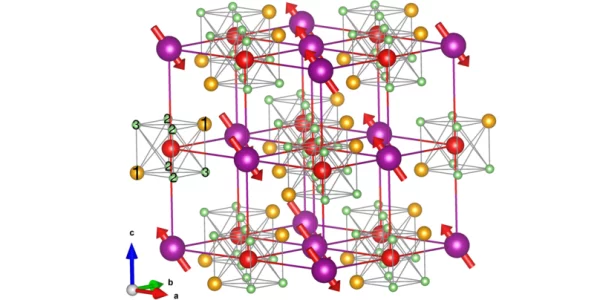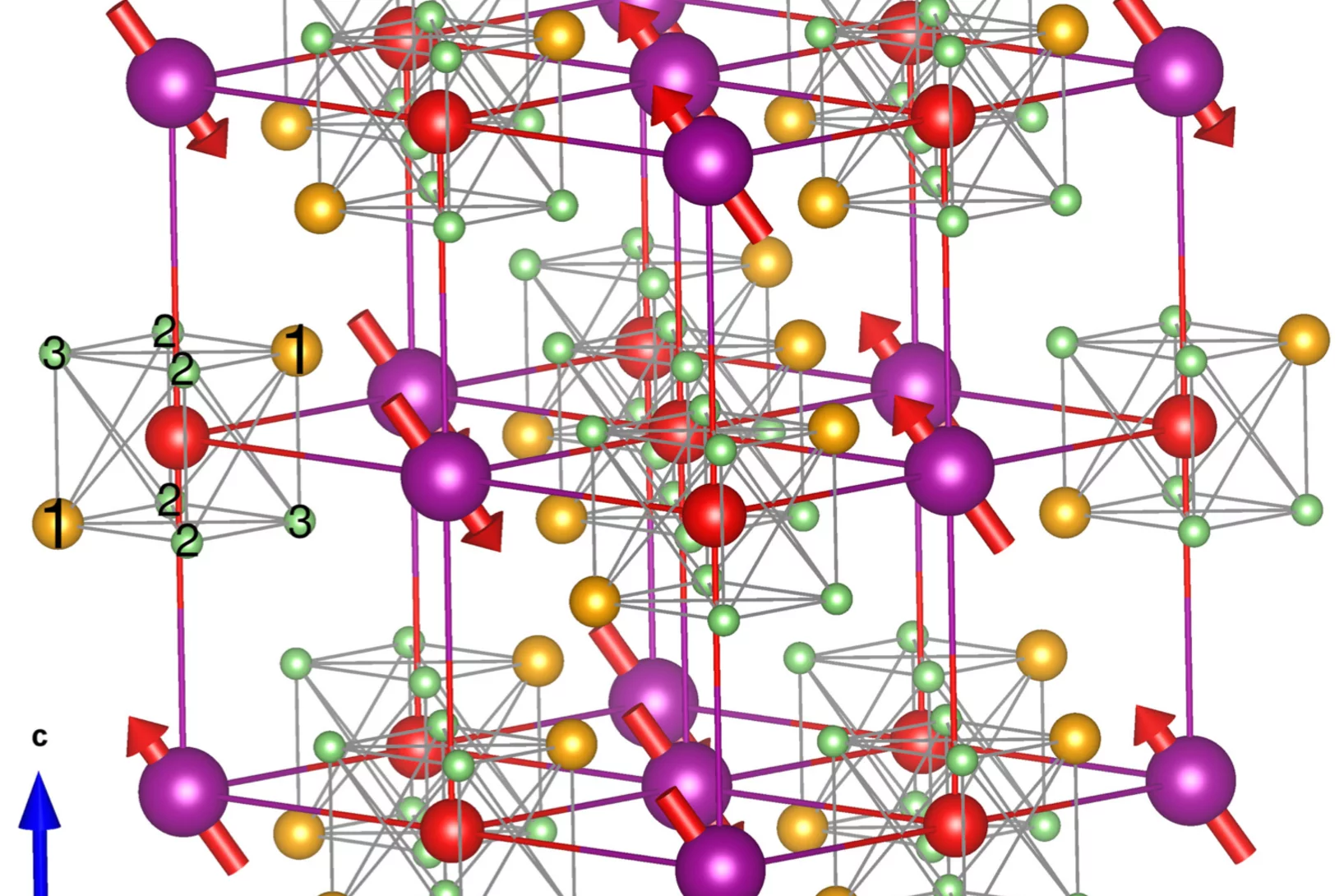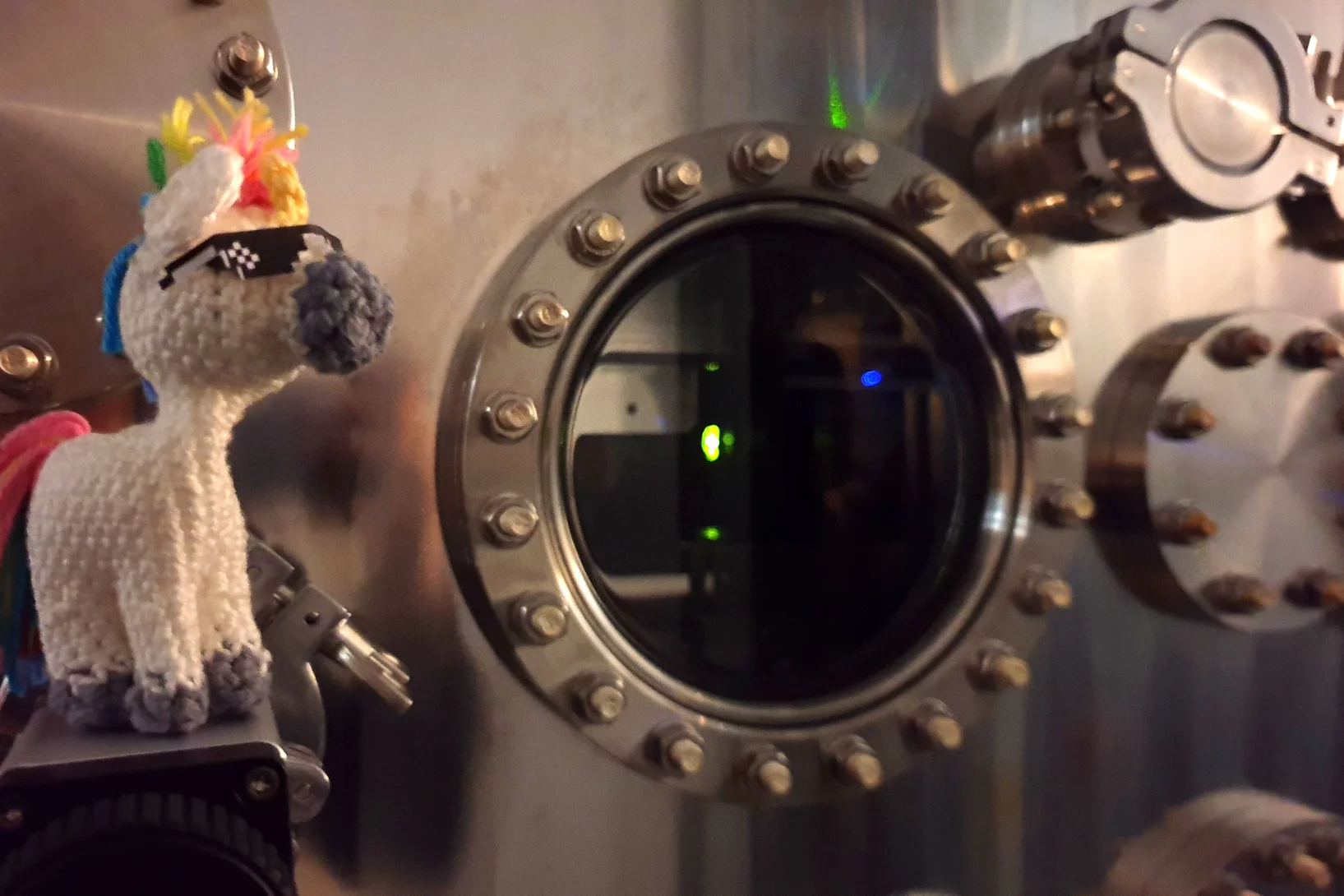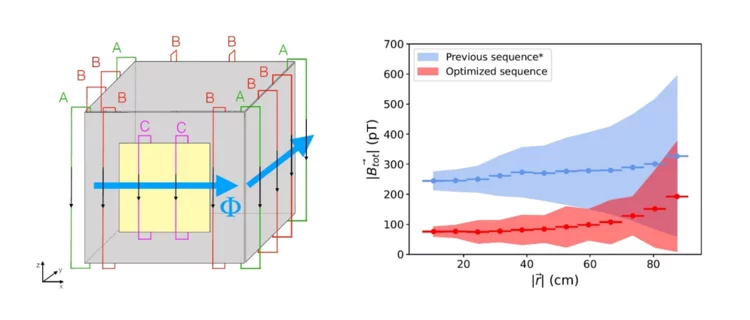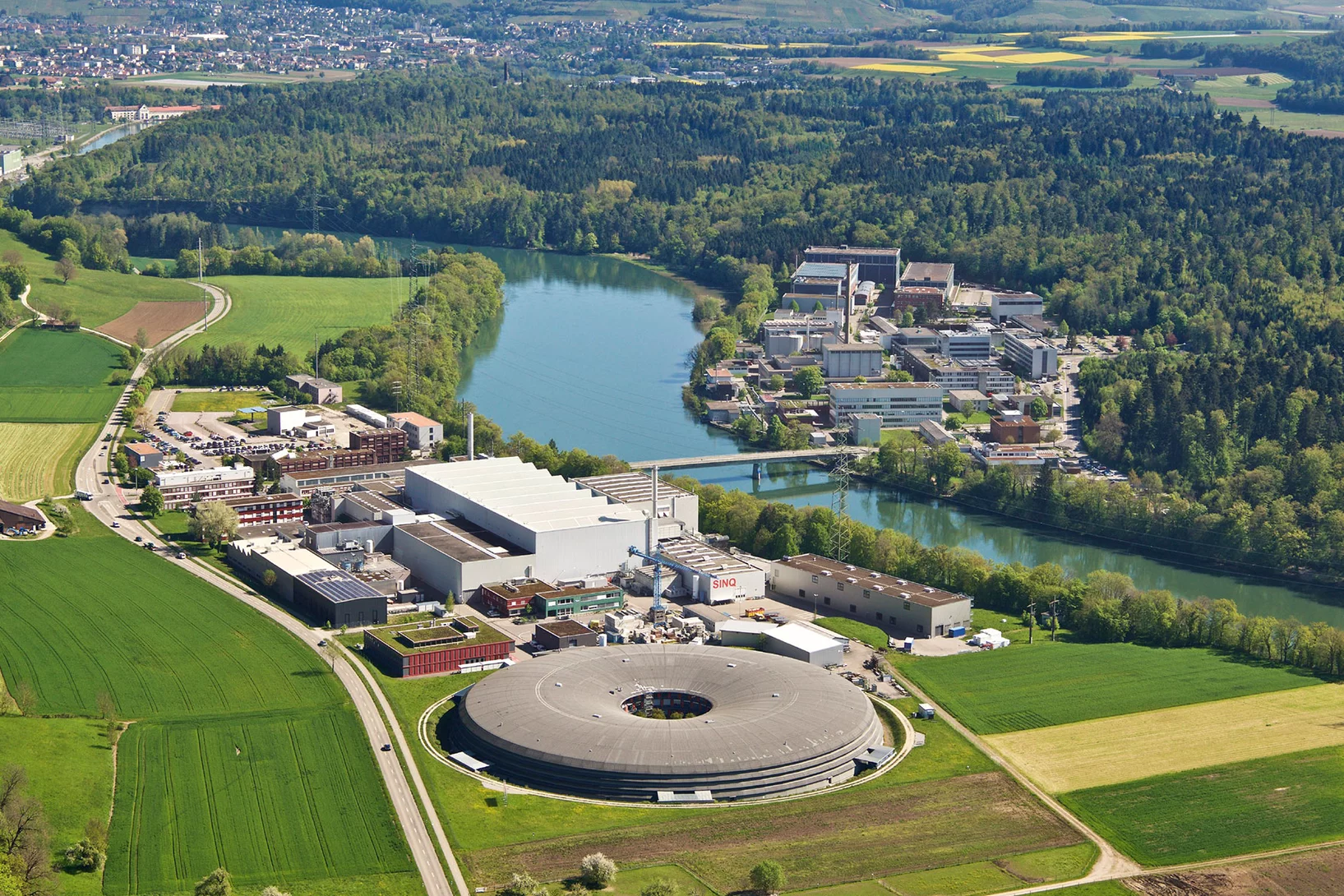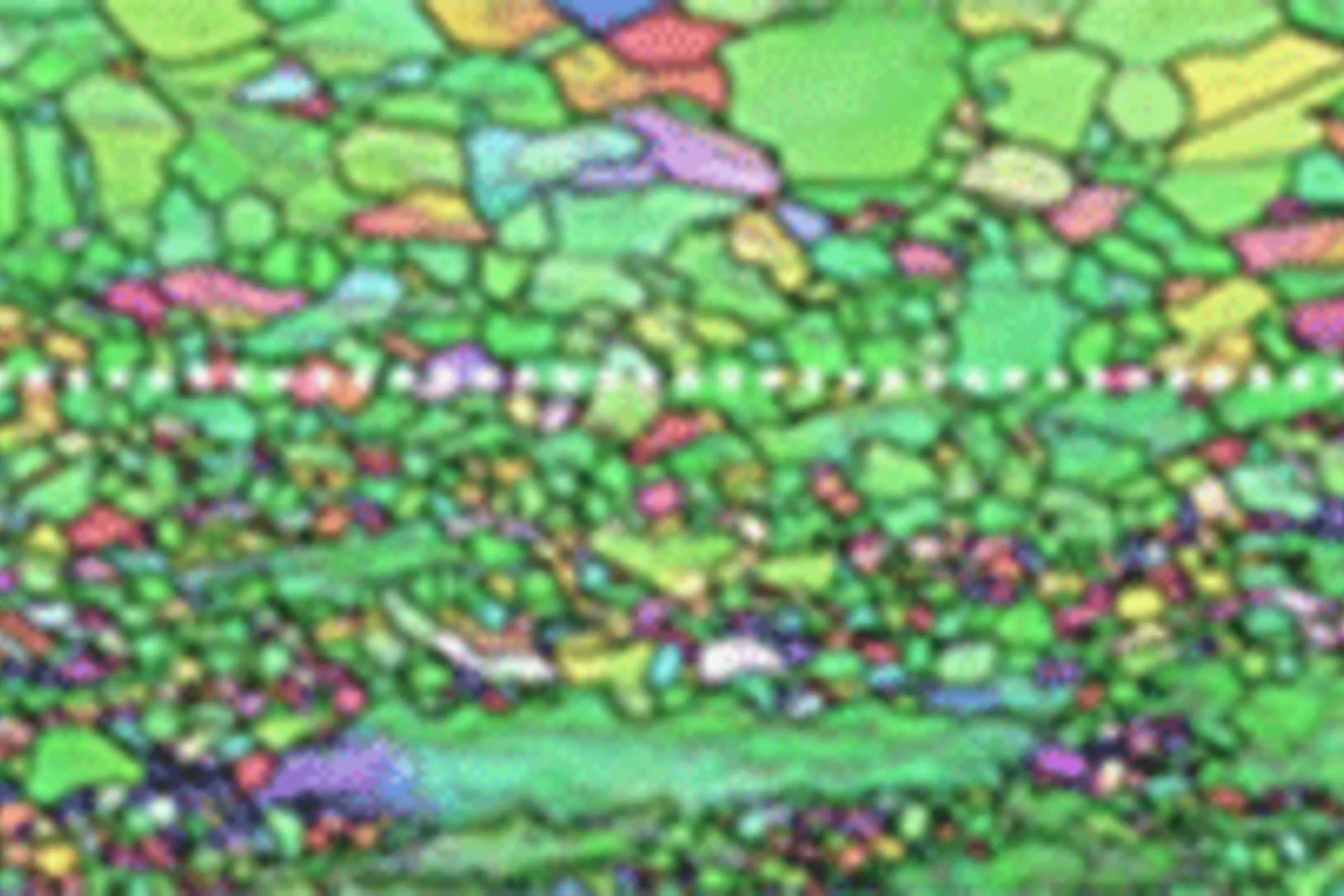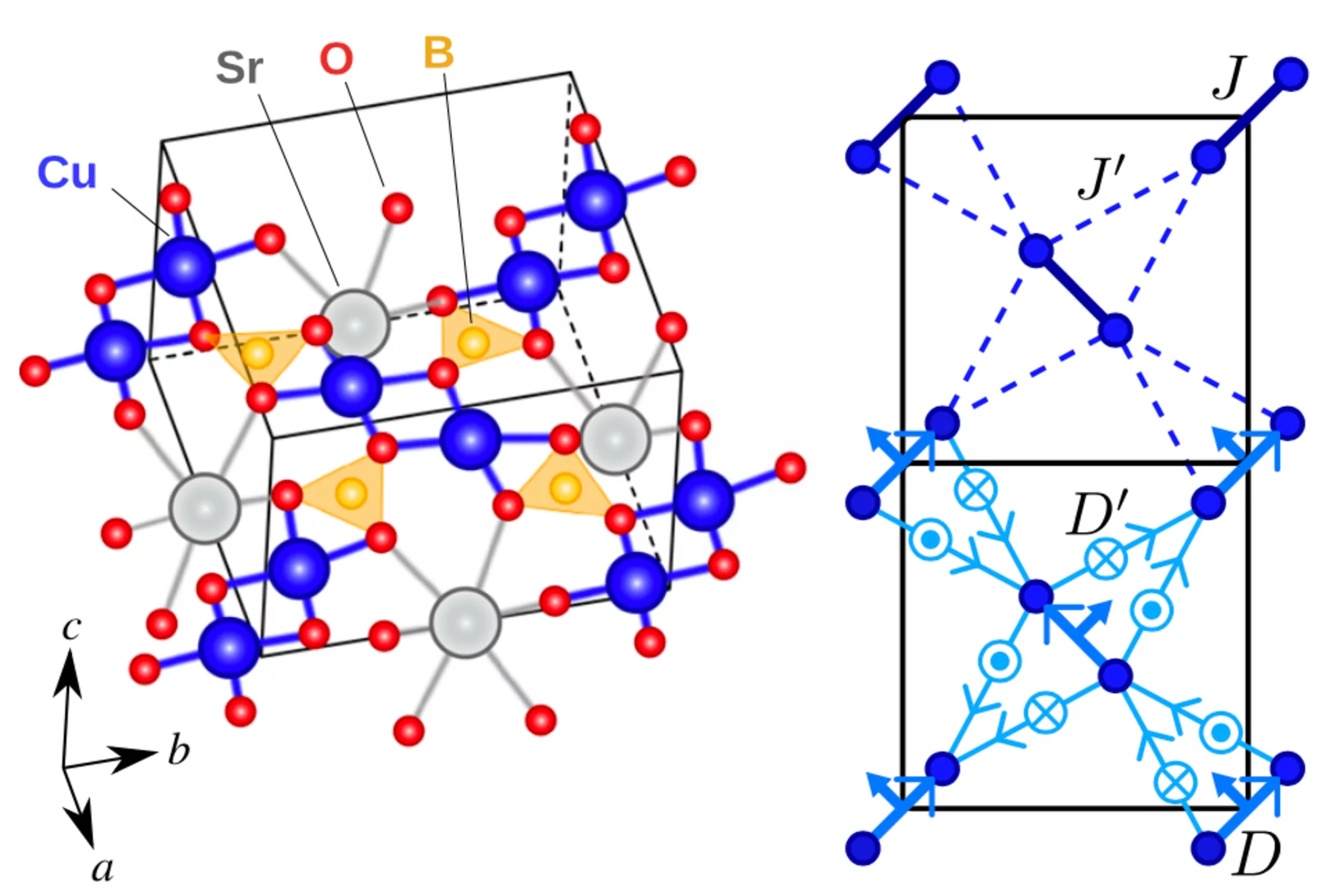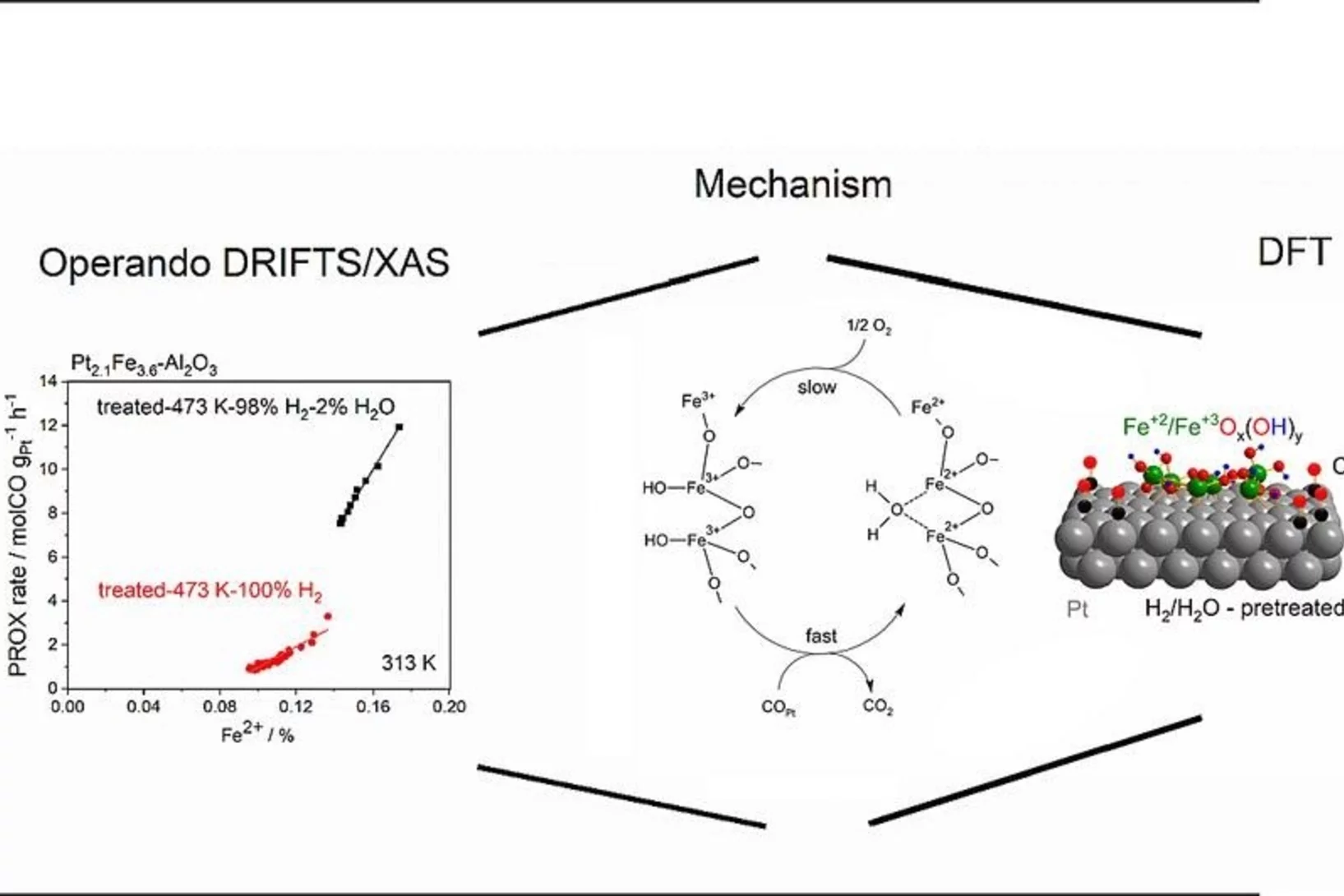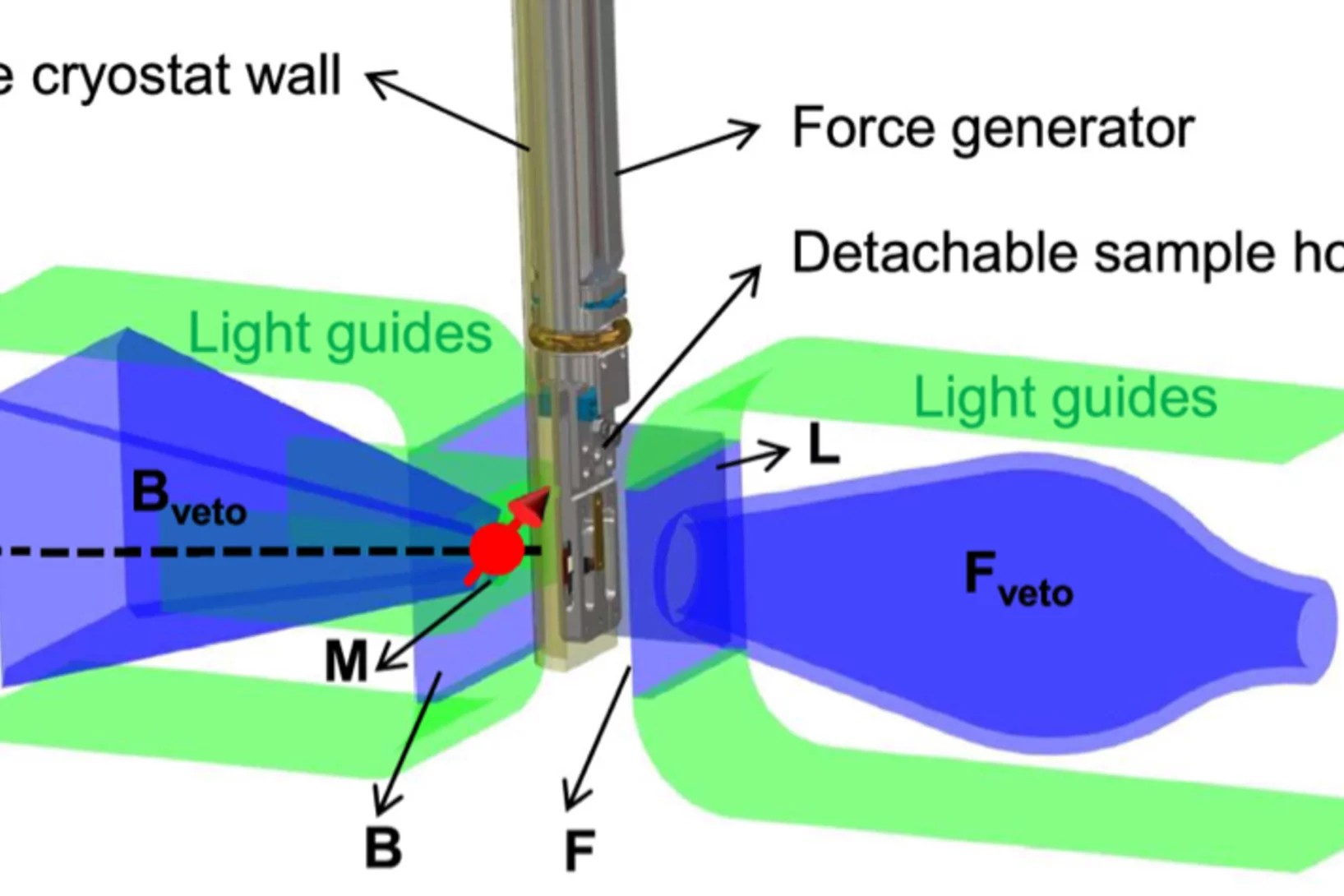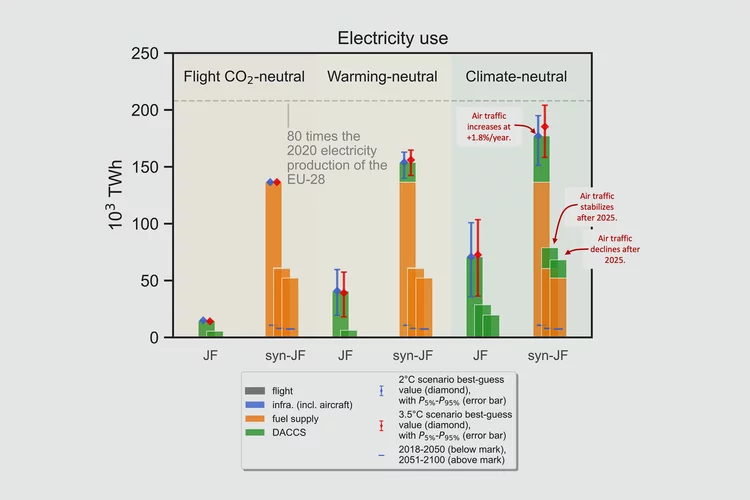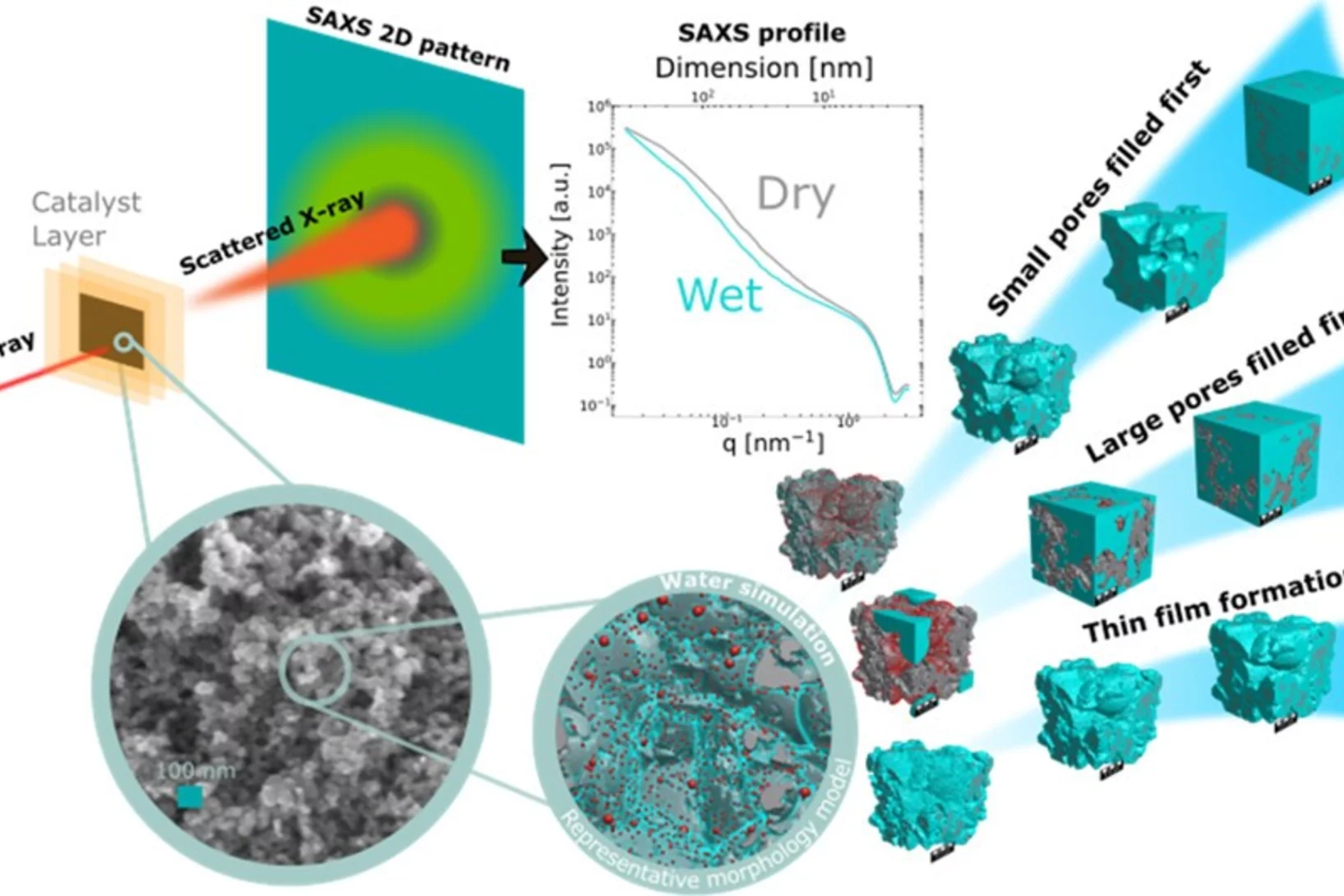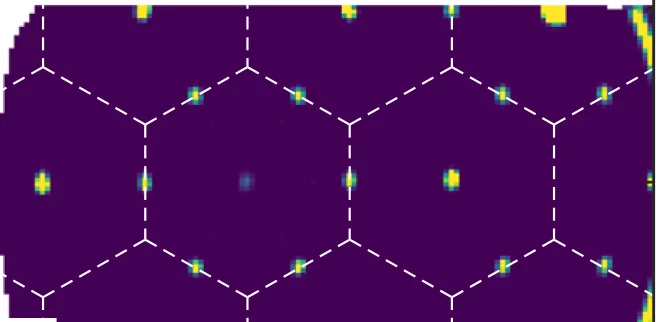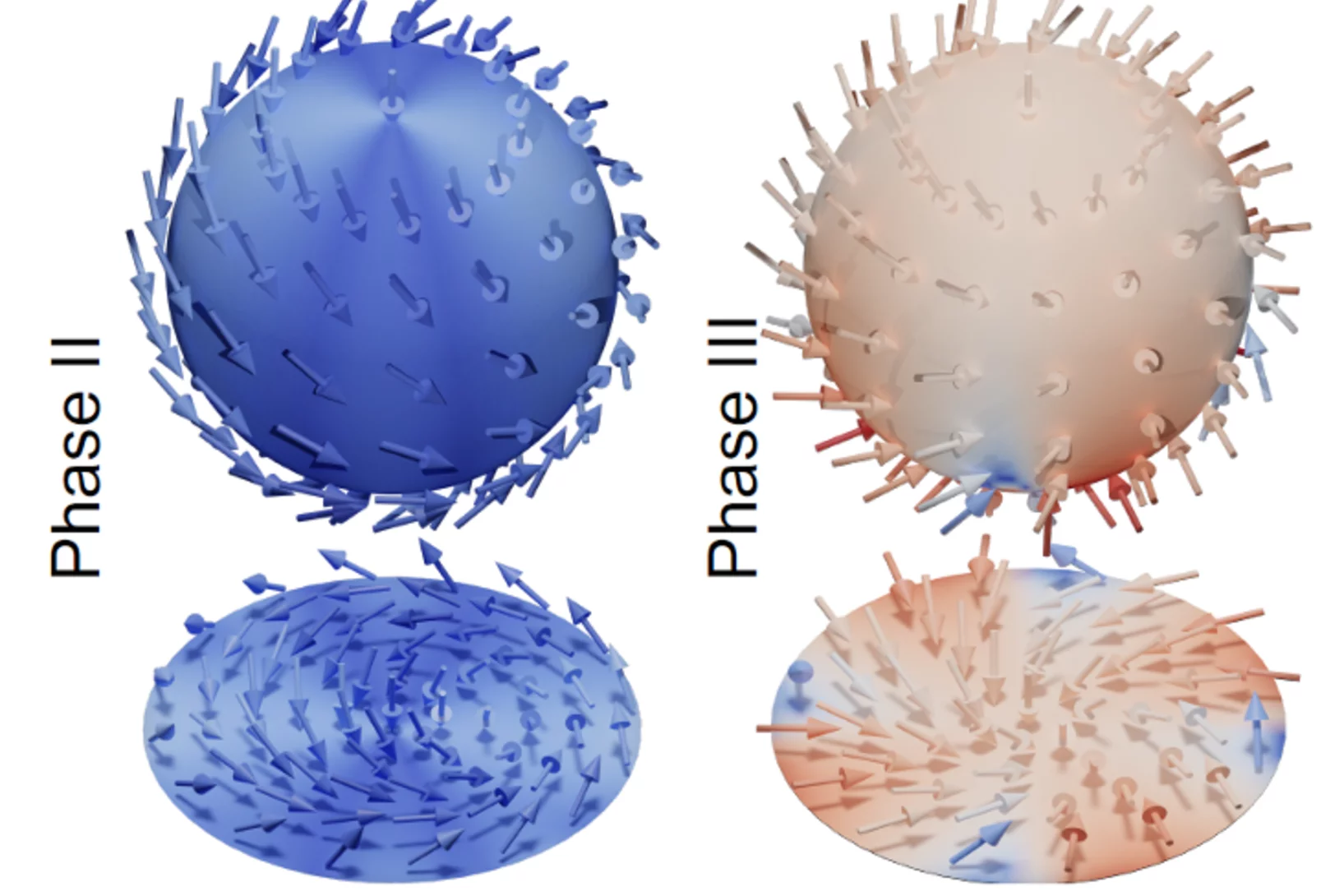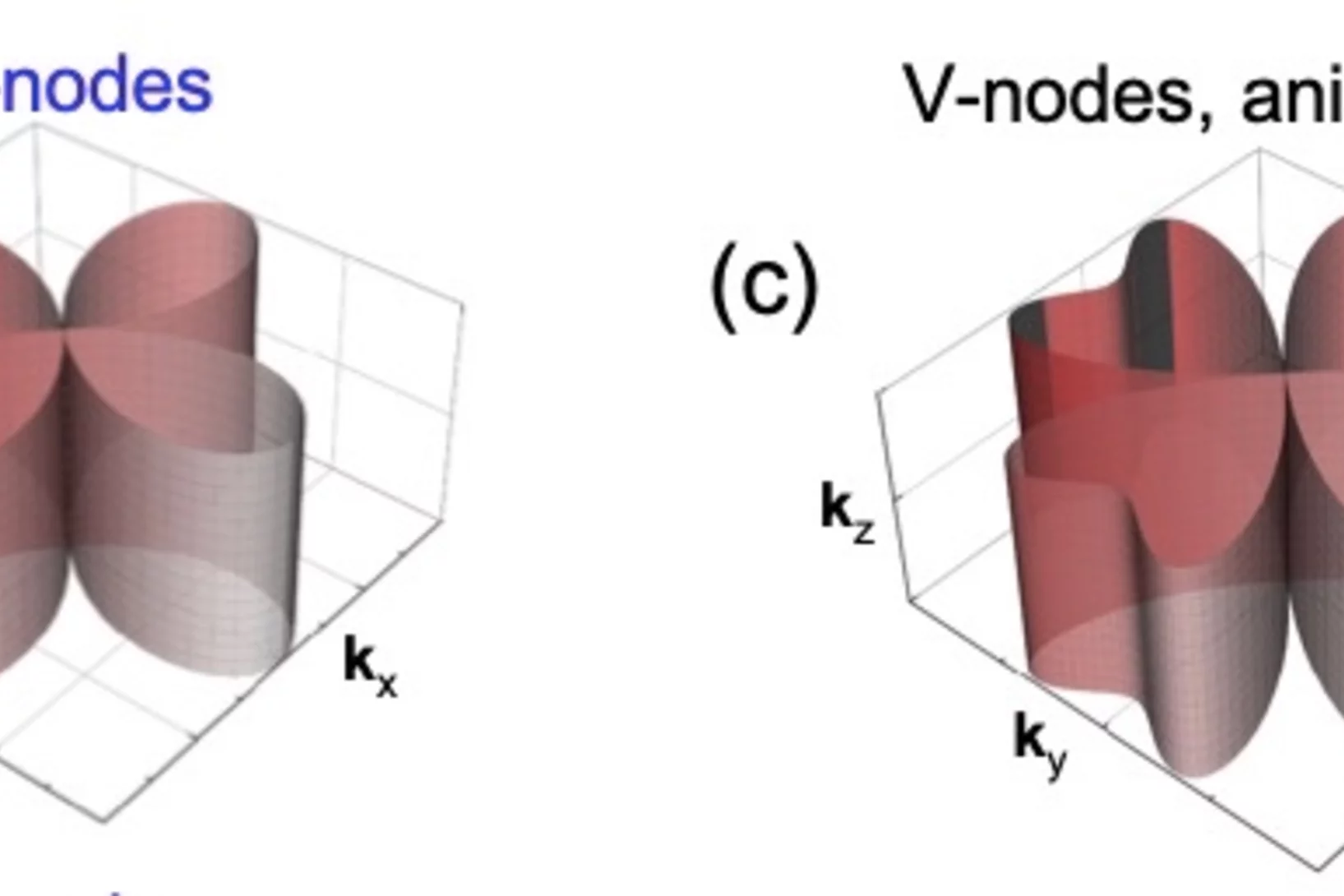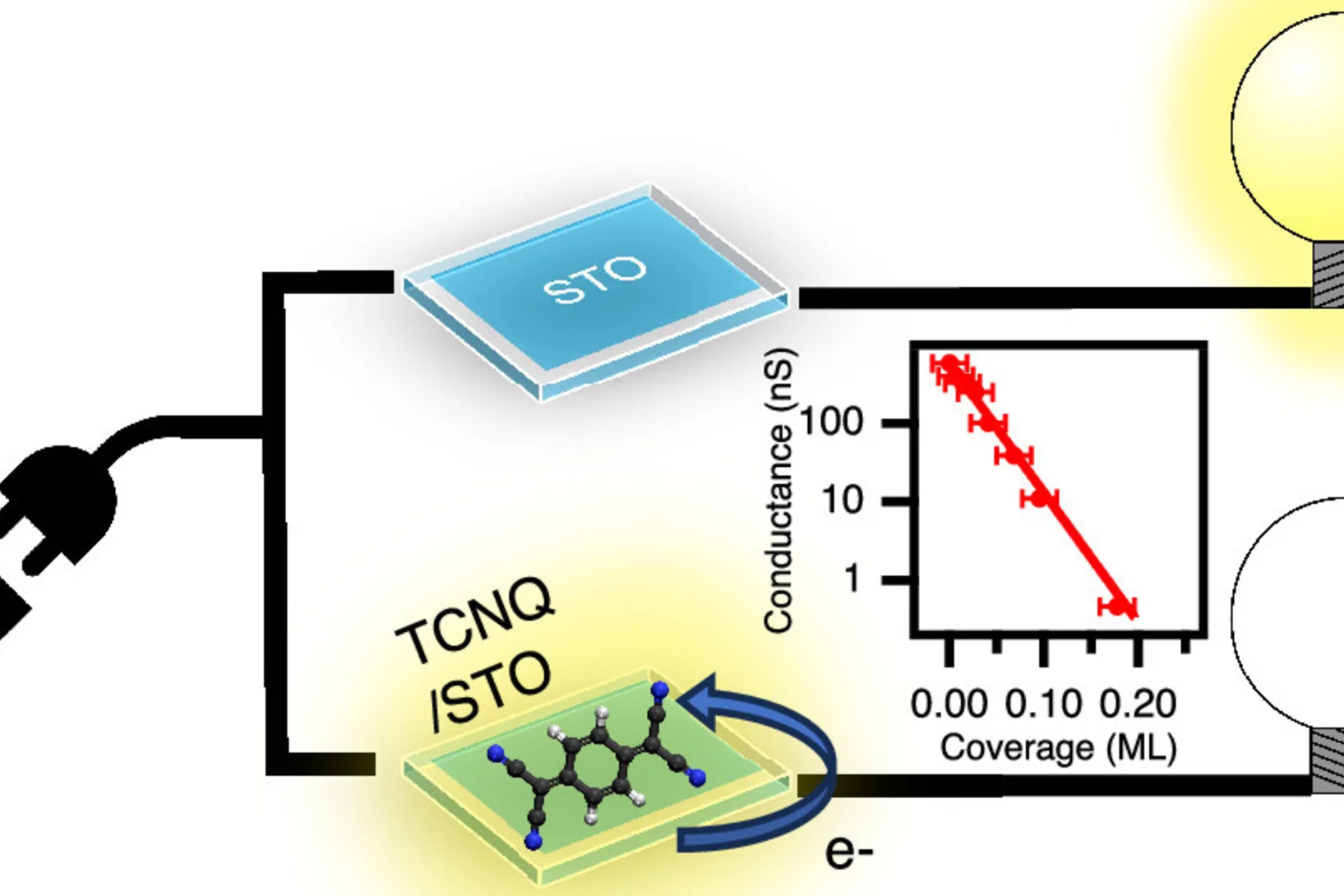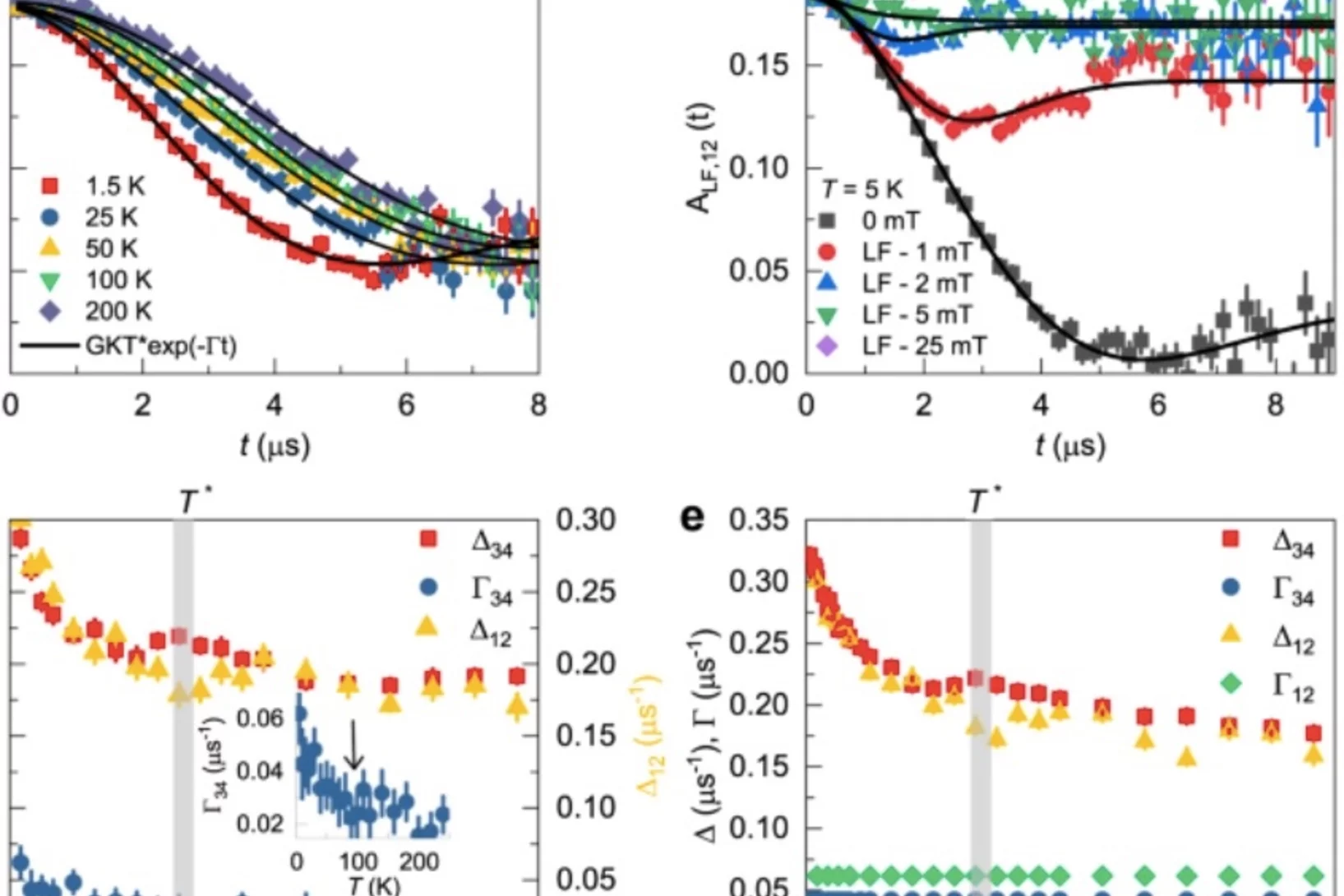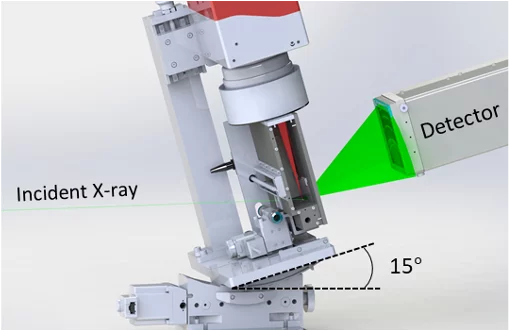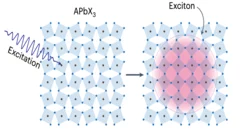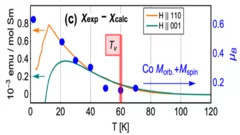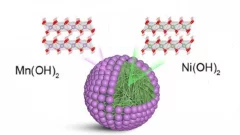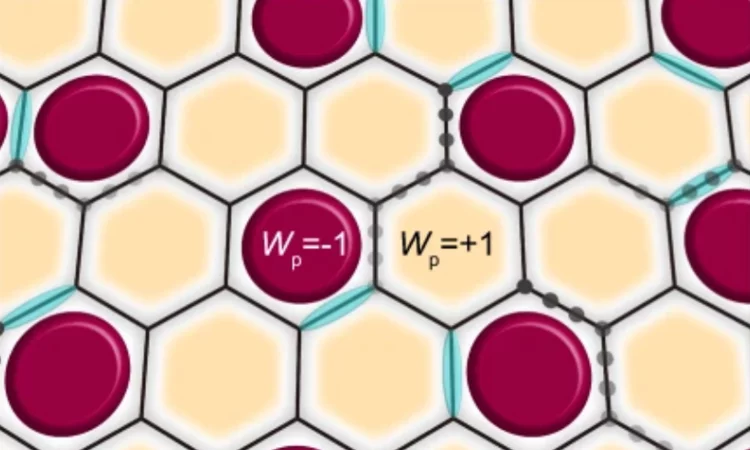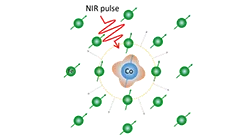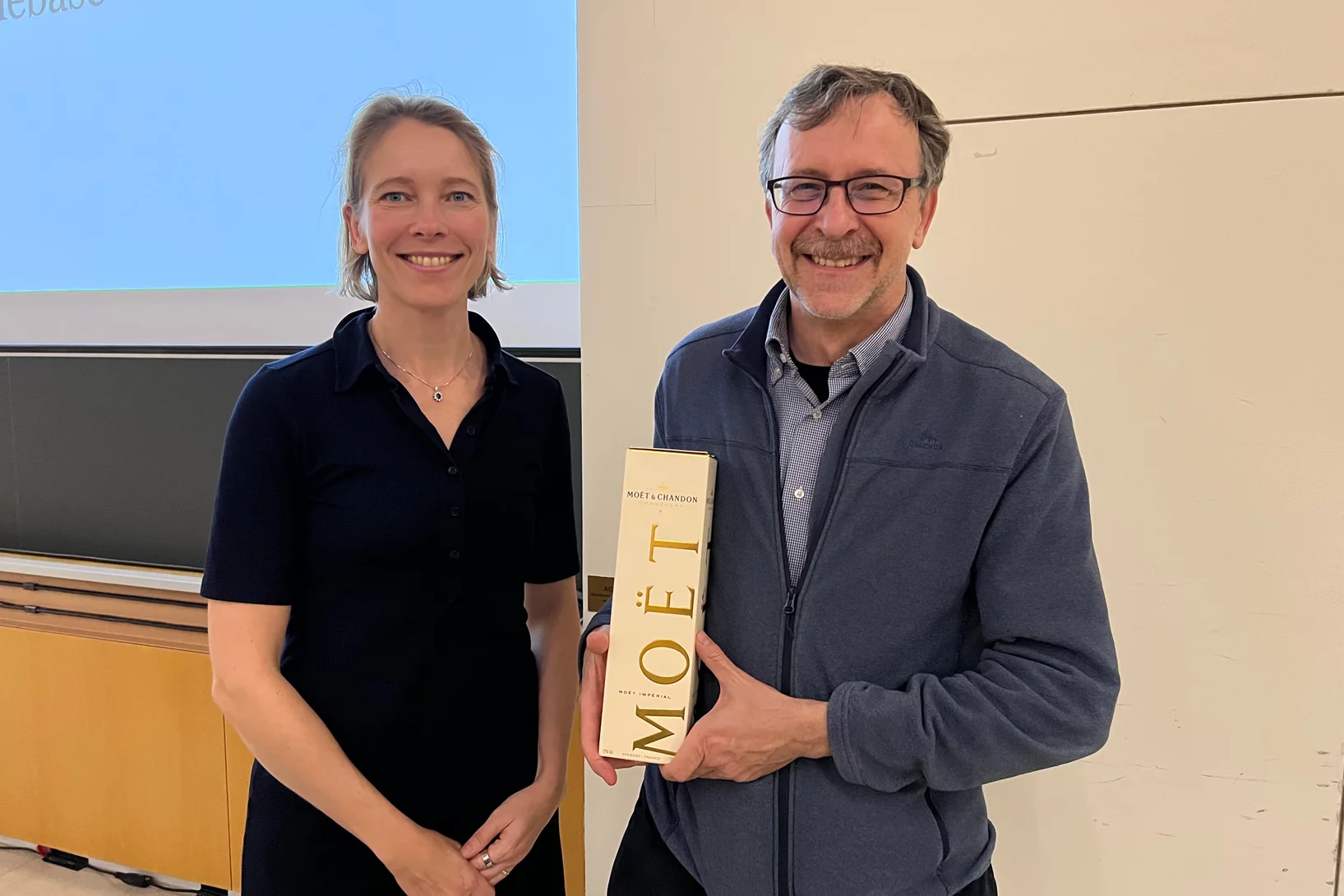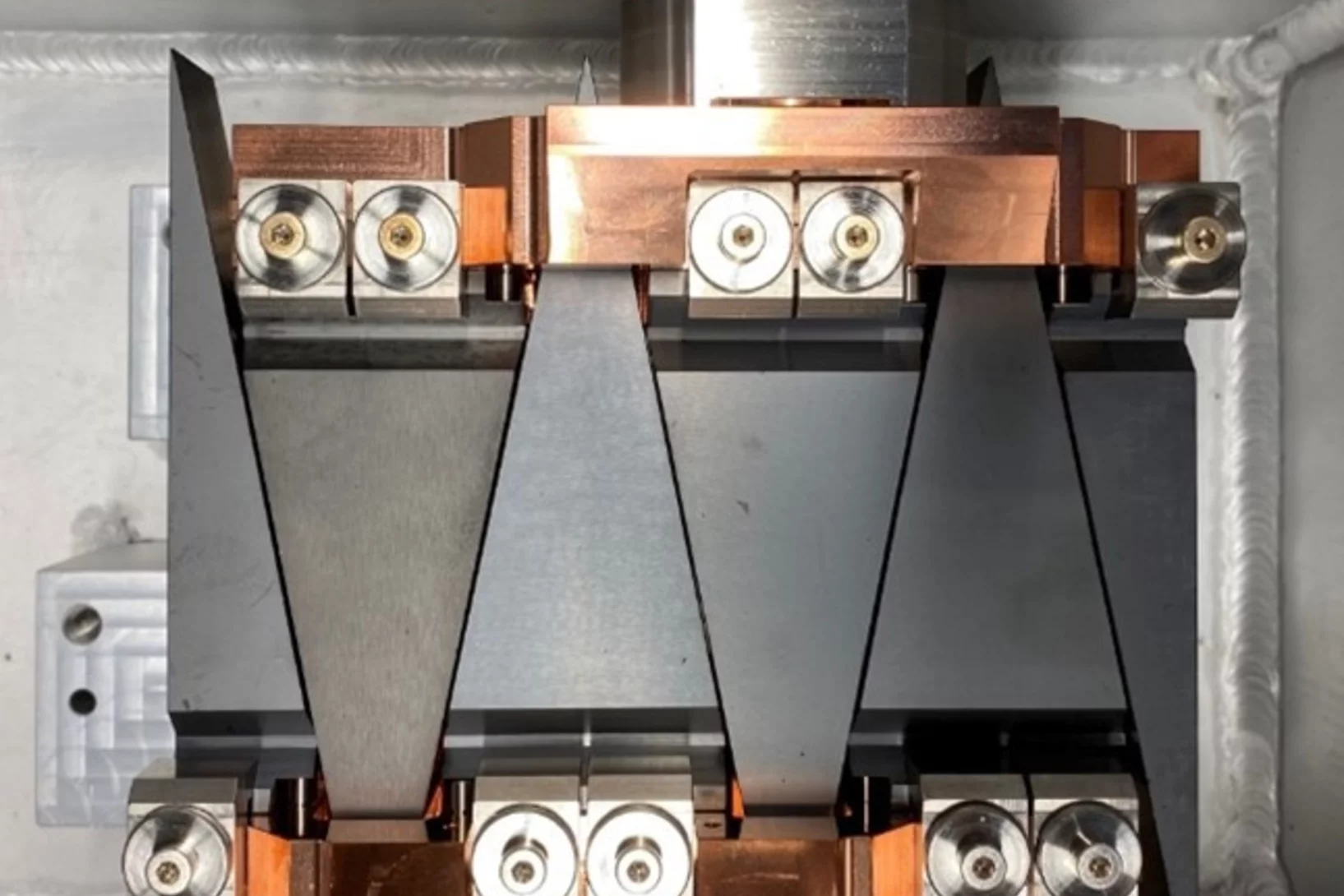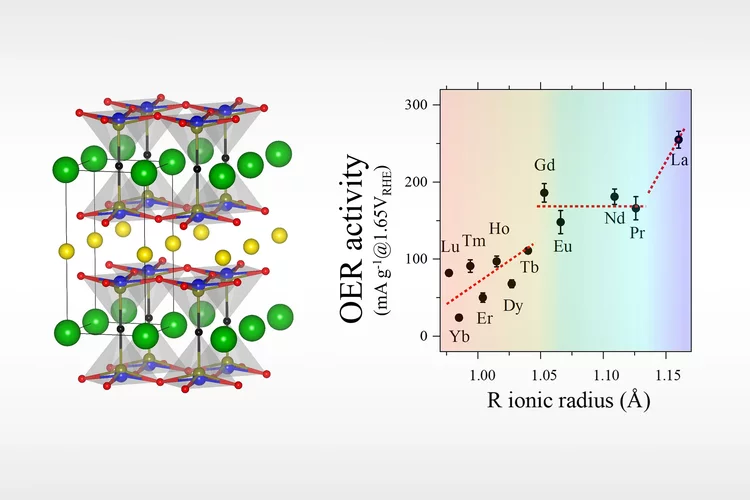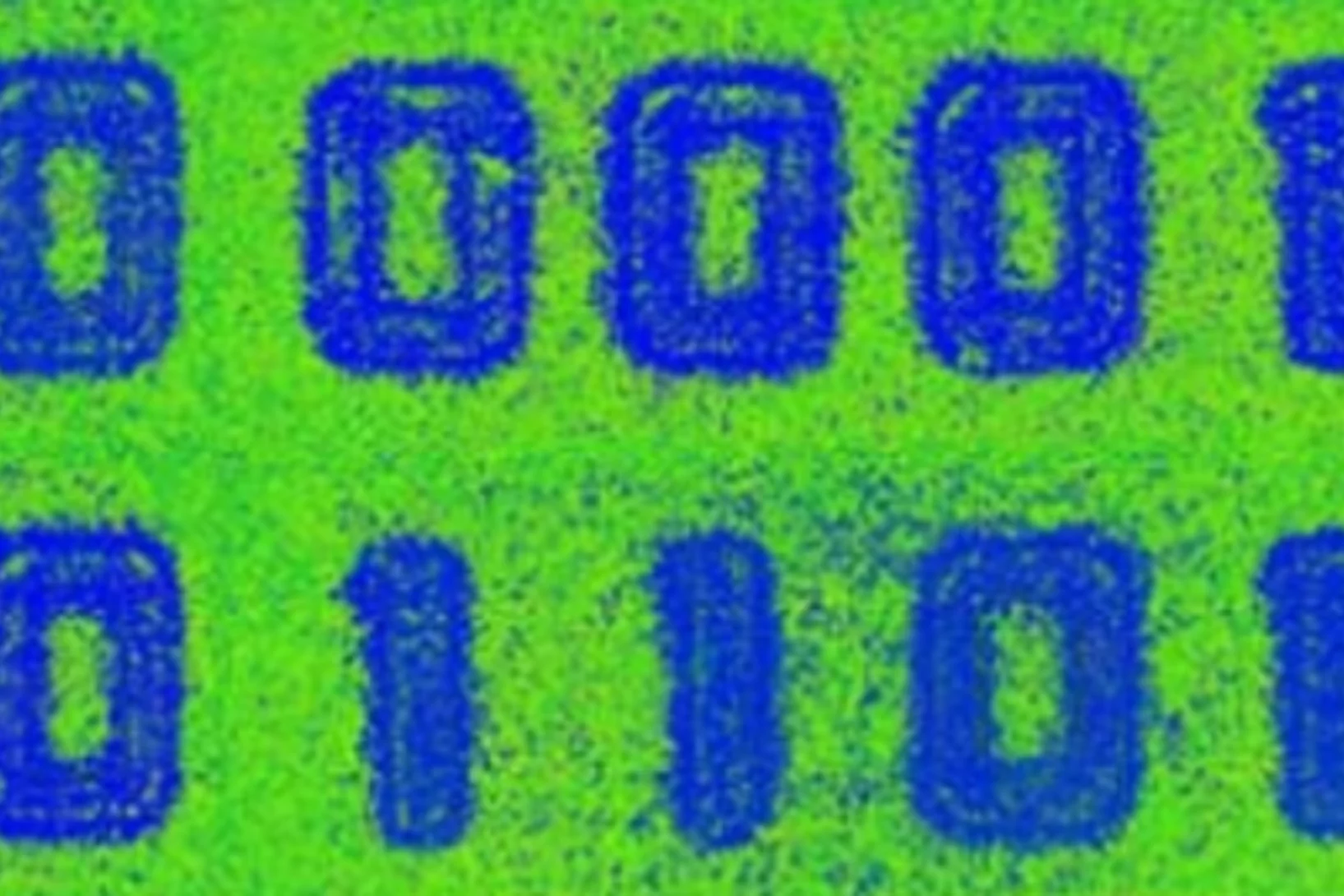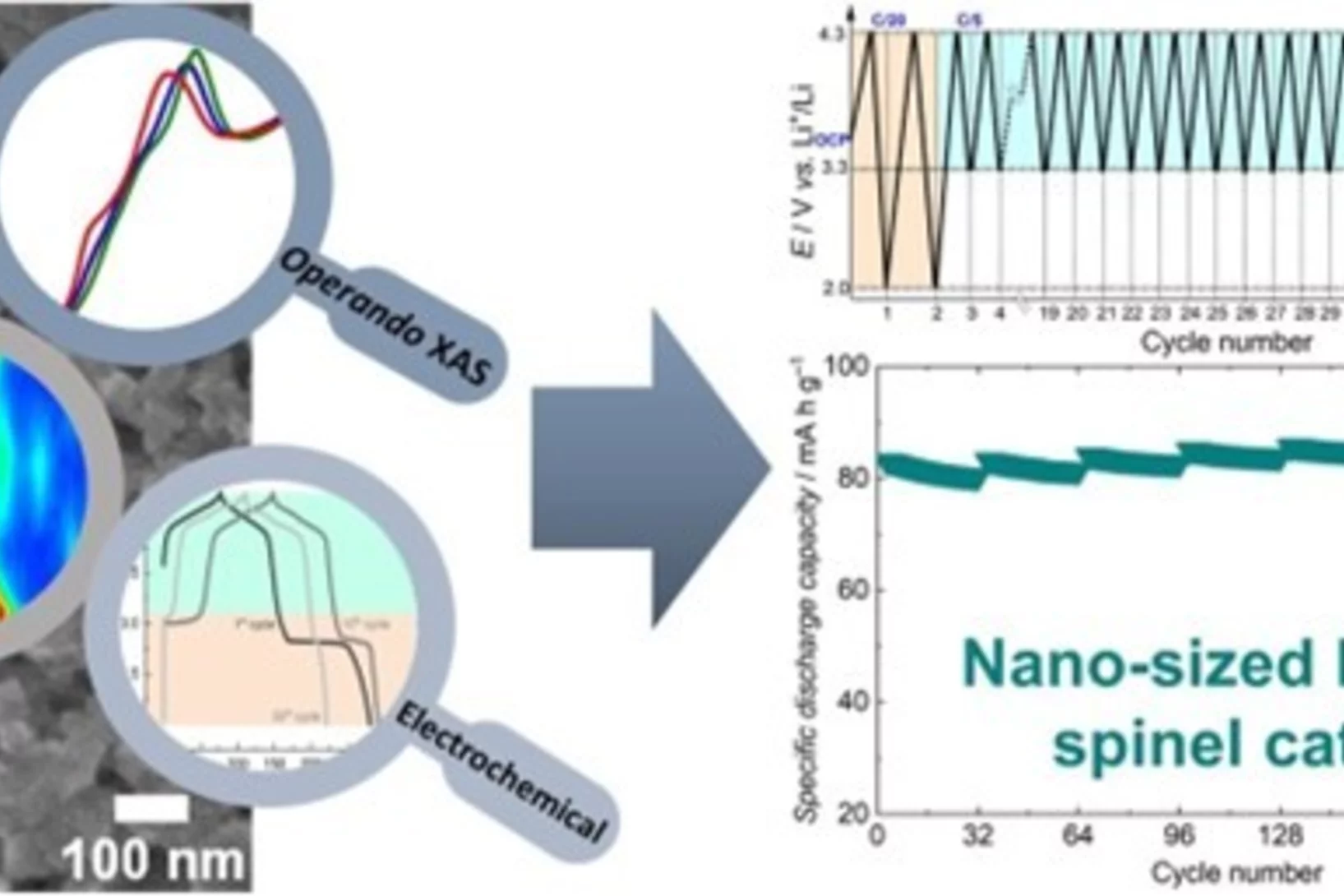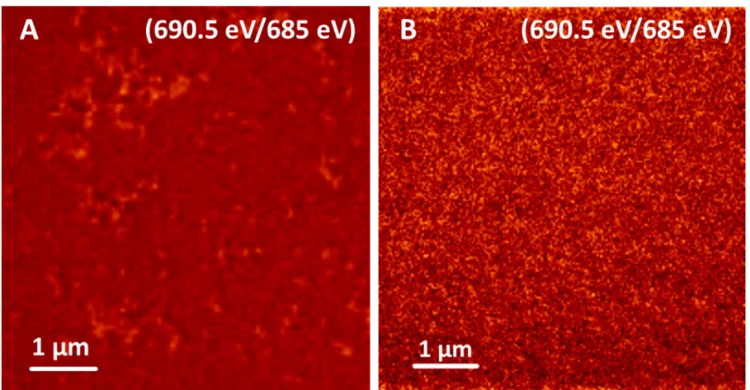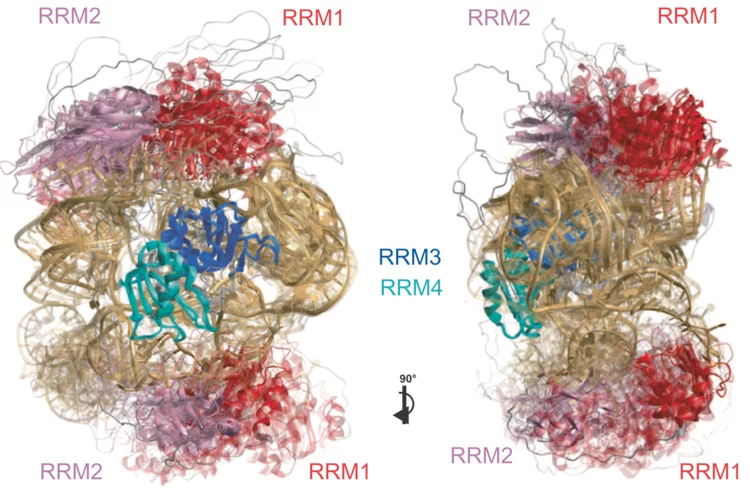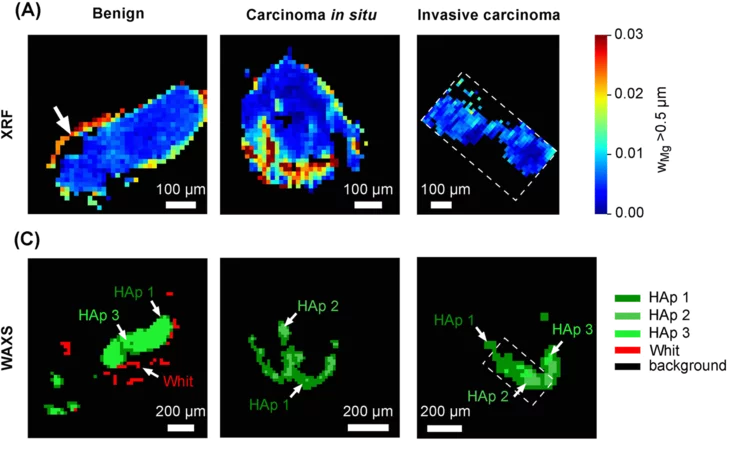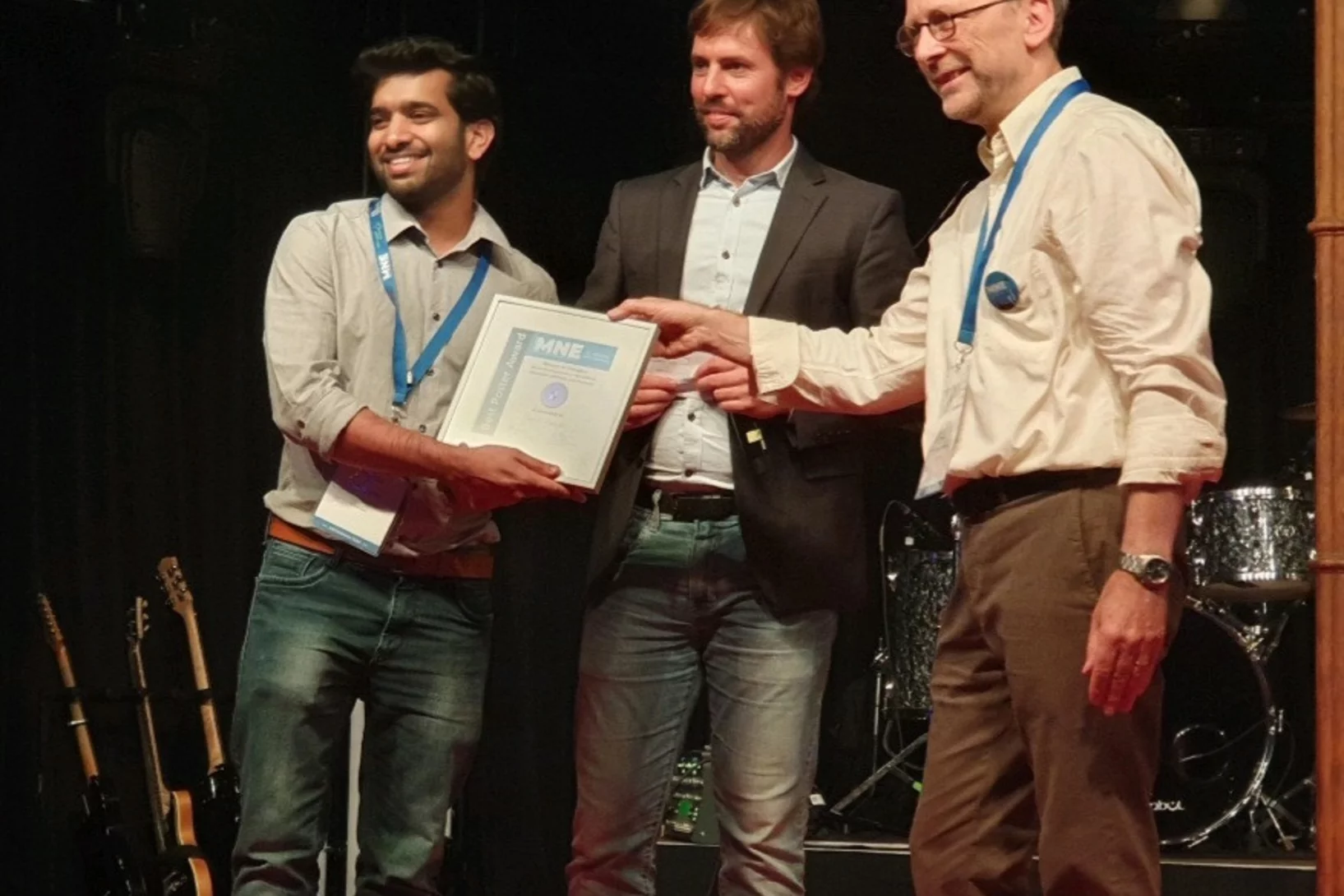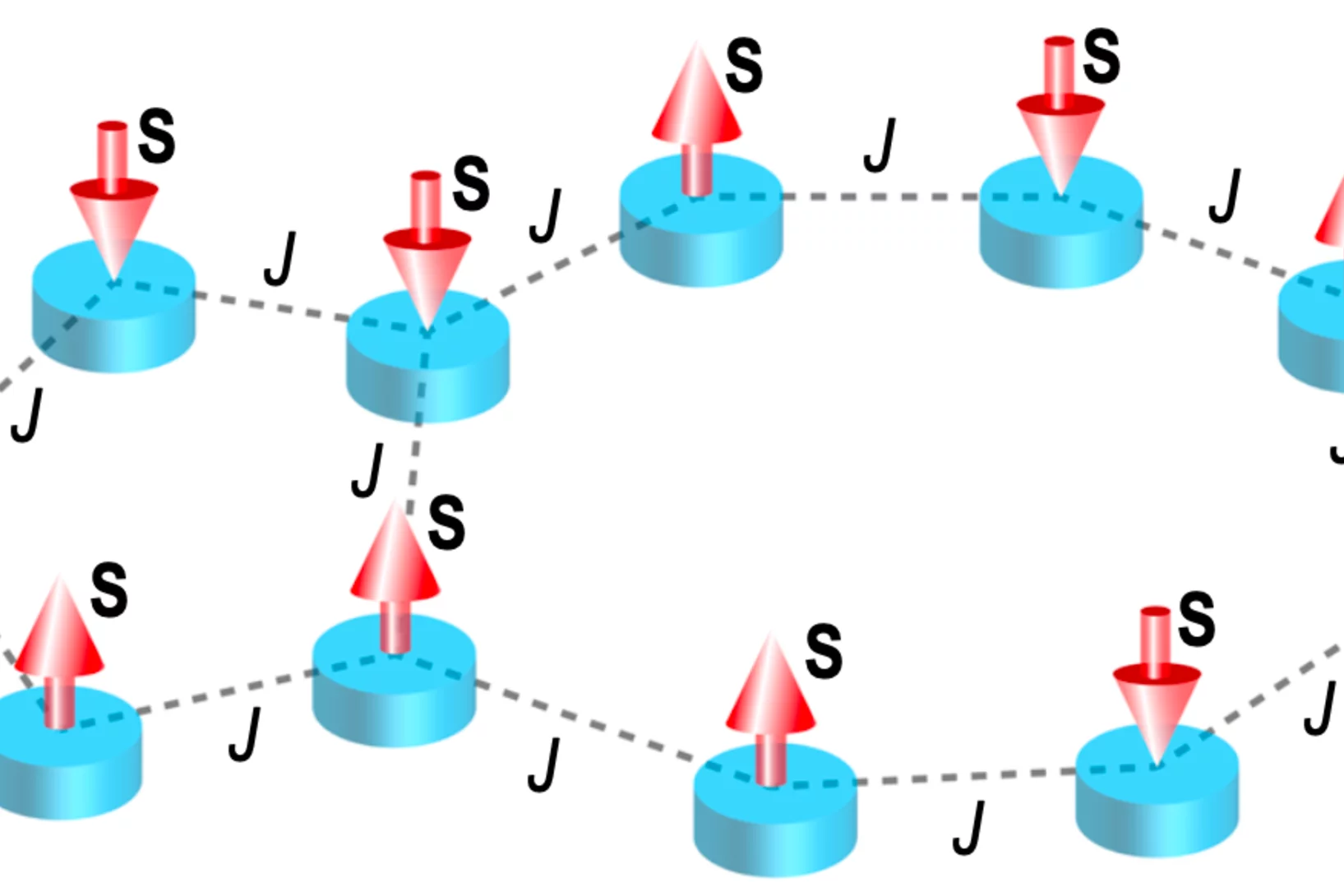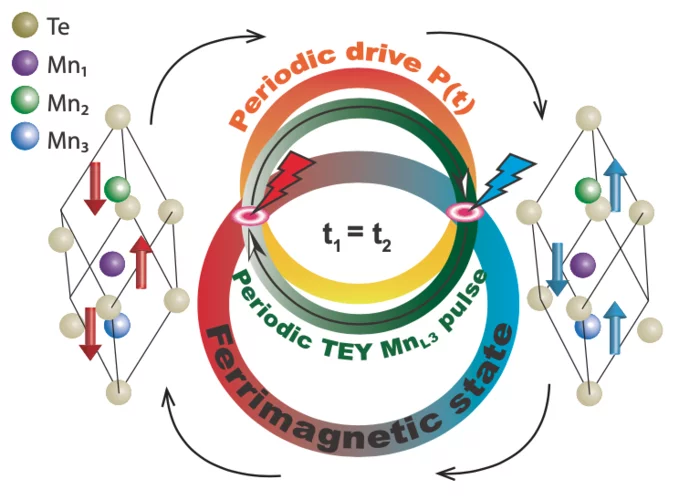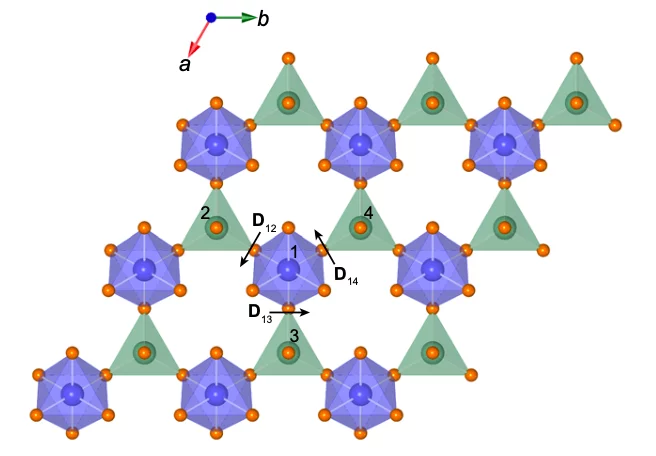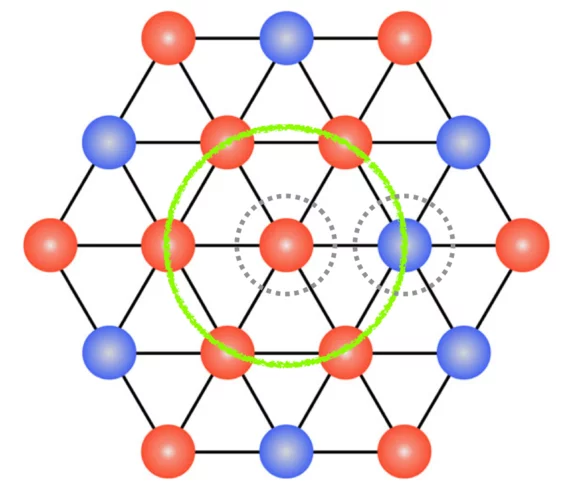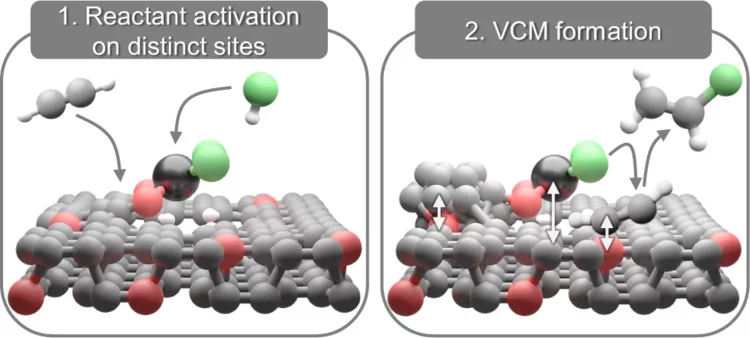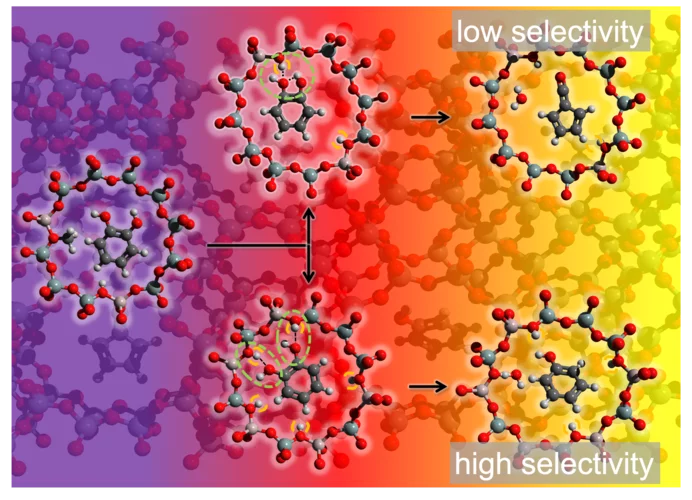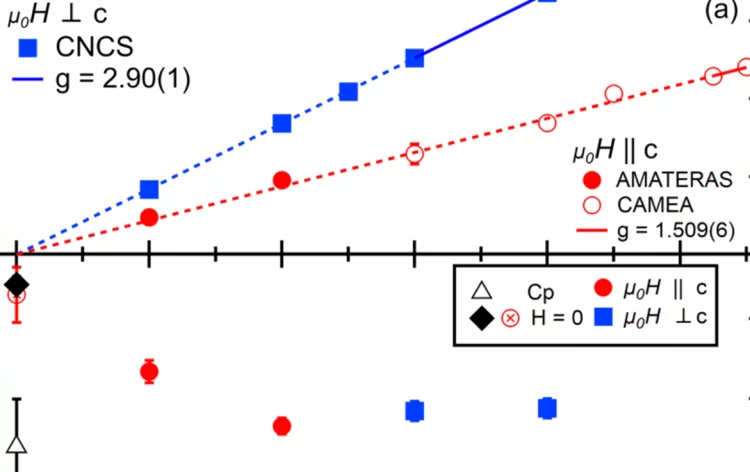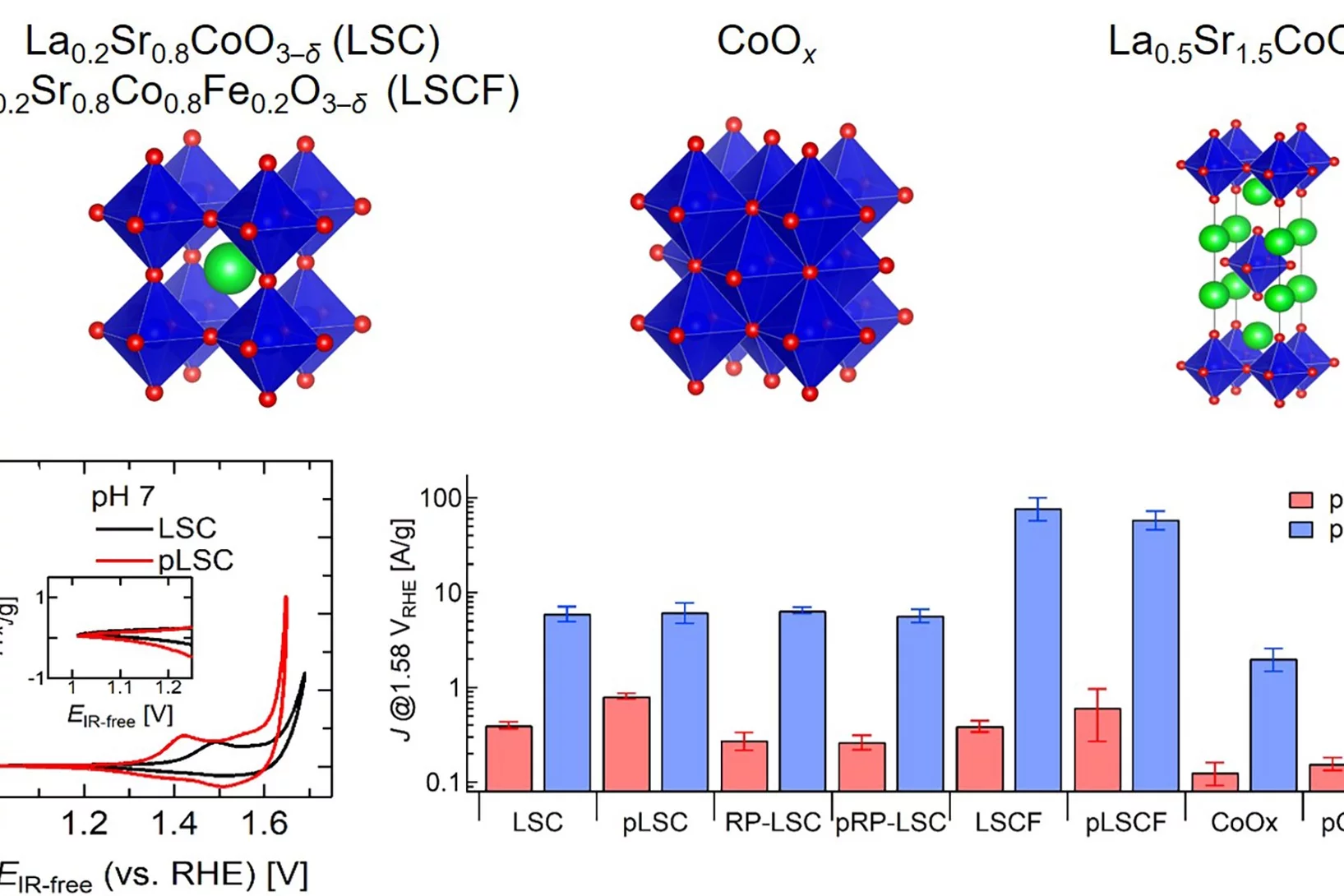"Magnetostriction-Driven Muon Localization in an Antiferromagnetic Oxide" published in Phys. Rev. Lett.
A study involving PSI scientists from the LMS lab, and just published in Physical Review Letters has found that in manganese oxide, a textbook antiferromagnetic material, the site of an implanted spin-polarized muon is not well identified, but can change due to a previously neglected effect: magnetostriction.
Magnetostriction-Driven Muon Localization in an Antiferromagnetic Oxide
Magnetostriction results from the coupling between magnetic and elastic degrees of freedom. Though it is associated with a relatively small energy, we show that it plays an important role in determining the site of an implanted muon, so that the energetically favorable site can switch on crossing a magnetic phase transition. This surprising effect is demonstrated in the cubic rocksalt antiferromagnet MnO which undergoes a magnetostriction-driven rhombohedral distortion at the Néel temperature TN = 118 K. Above TN ...
First Light at MaxIV for SOPHIE
On January 23rd, 2024, first "Swedish" X-ray light was delivered to the SOPHIE endstation, currently installed at the SoftiMAX beamline of the MaxIV light source.
Achieving ultra-low and -uniform residual magnetic fields in a very large magnetically shielded room for fundamental physics experiments
n2EDM is the current state of the art experiment carrying out a high-precision search for an electric dipole moment of the neutron at the ultra-cold neutron source of PSI. In order to reach it’s incredible precision of 10-27 e cm, a stable and uniform magnetic environment is critical. Thus, shielding the experiment from external magnetic flux and preparing a pristine magnetic environment is crucial. To achieve this, n2EDM uses both passive and active magnetic shielding components. External, or residual, magnetic field contributions must be near-zero, and can be achieved via “degaussing” the experiment’s passive magnetic shielding. Degaussing reduces, ideally “erases”, the residual magnetization of a material. In this work, we greatly improved the degaussing procedure of n2EDM, reducing the residual magnetic field by a factor of two, improving its uniformity, and all while taking less time and dissipating less heat.
A precision mechanical masterpiece in miniature
With the discovery of a golden miniature box lock, an extraordinary and unique archaeological find was made in north-western Germany by a licensed detectorist.
The object represents an extremely reduced and valuable version of the provincial Roman box locks. These everyday objects were in general significantly larger and normally made either of iron, iron with silver or bronze bands or bronze.
Prof. Laura Grigori wins the SIAM Supercomputing Career Prize
Congratulations to Laura Grigori for being awarded the 2024 SIAM Activity Group on Supercomputing Career Prize in acknowledgement of her "outstanding contributions to scientific computing, particularly communication-avoiding algorithms".
Are you interested in working at the Scientific Computing, Theory and Data division at the PSI?
We invite you to join us at the Paul Scherrer Institute, one of Europe's premier multidisciplinary research centres. Since its establishment in 1988, PSI has been dedicated to advancing scientific discovery across various fields. The Scientific Computing, Theory and Data (CSD) division at PSI serves as the core of computational science and data analysis at our institute, playing an important role in supporting research across all scientific disciplines.
Observing laser-induced recrystallization
Synchrotron X-ray diffraction sheds light on laser-induced local recrystallization .
Field-induced bound-state condensation and spin-nematic phase in SrCu2(BO3)2 revealed by neutron scattering up to 25.9 T
In quantum magnetic materials, ordered phases induced by an applied mag- netic field can be described as the Bose-Einstein condensation (BEC) of mag- non excitations. In the strongly frustrated system SrCu2(BO3)2, no clear magnon BEC could be observed, pointing to an alternative mechanism, but the high fields required to probe this physics have remained a barrier to detailed investigation.Here we exploit the first purpose-built high-field neutron scattering facility to measure ...
Water-assisted generation of catalytic interface: The case of interfacial Pt-FeOx(OH)y sites active in preferential carbon monoxide oxidation
Pt-FeOx(OH)y interface with enhanced activity for PROX is generated via strong metal-support interaction. Increase in the degree of hydroxylation of Pt-FeOx(OH)y interface enhances the rate of PROX mediated by active Fe2+ species.
Designing the stripe-ordered cuprate phase diagram through uniaxial-stress
Understanding the degree to which charge-stripe, spin-stripe, and superconducting orders compete/coexist is paramount for elucidating the microscopic pairing mechanism in the cuprate high-temperature superconductors. We explore the tunability of magnetism, superconductivity, and crystal structure in the stripe phase of the cuprate La2−xBaxCuO4, by employing complementary techniques under compressive uniaxial stress in the CuO2 plane. Our results show a sixfold increase ...
Climate-neutral aviation: will it fly?
The European aviation sector stands at a pivotal juncture in its quest to achieve net-zero climate impacts. Focusing on flight CO2 emissions overlooks up to 80% of the sector's climate repercussions.
Our research delves deep into the role of electricity-based synthetic jet fuels and direct air carbon capture and storage (DACCS) as potential game-changers. These solutions promise climate-neutral aviation, but there's a catch: the relentless rise in air traffic. Relying solely on renewables-derived synthetic fuels may strain both economic and natural resources. On the flip side, offsetting fossil jet fuel impacts via DACCS poses its own set of challenges. Our findings underscore one clear message: for a genuinely climate-neutral European aviation, we must reconsider the scale of air traffic.
Quantification of PEFC Catalyst Layer Saturation via Small-Angle X‑ray Scattering
The complex nature of liquid water saturation in polymer electrolyte fuel cell (PEFC) catalyst layers (CLs) greatly affects the device performance. To investigate this problem, a method to quantify the presence of liquid water in a PEFC CL using small-angle X-ray scattering (SAXS) was developed in a collaboration of researchers of the Federal Institute for Materials Research and Testing (BAM, Berlin, Germany), the Photon Science Division and the Electrochemistry Laboratory of PSI. The method leverages the differences in electron densities between the solid catalyst matrix and the CL-pores filled with liquid water under dry and wet conditions, respectively.
Tetrahedral triple-Q magnetic ordering and large spontaneous Hall conductivity in the metallic triangular AFM Co1/3TaS2
The triangular lattice antiferromagnet (TLAF) has been the standard paradigm of frustrated magnetism for several decades. The most common magnetic ordering in insulating TLAFs is the 120° structure. However, a new triple-Q chiral ordering can emerge in metallic TLAFs, representing the short wave- length limit of magnetic skyrmion crystals. We report the metallic TLAF Co1/3TaS2 as the first example of tetrahedral triple-Q magnetic ordering with the associated topological Hall effect (non-zero σxy(H = 0)). We also ...
Phonon Topology and Winding of Spectral Weight in Graphite
The topology of electronic and phonon band structures of graphene is well studied and known to exhibit a Dirac cone at the K point of the Brillouin zone. Here, we applied inelastic x-ray scattering (IXS) along with ab initio calculations to investigate phonon topology in graphite, the 3D analog of graphene. We identified a pair of modes that form a very weakly gapped linear anticrossing at the K point that can be essentially viewed as a Dirac cone approximant. The IXS intensity ...
Skyrmion metamorphosis: Lattice transitions of hybrid skyrmions in a polar magnet
Magnetic skyrmions, with their distinctive vortex-like magnetic spin configurations, continue to intrigue researchers due to their potential applications in nanoscience and technology. Traditionally skyrmions form two-dimensional hexagonal close-packed lattices, with the skyrmions themselves displaying one of just two types of internal magnetization texture known as Bloch- or Néel-type. Recent theories hinted at the prospect of reconfigurable transitions between skyrmion phases of different lattice types and internal textures. Until now, experimental evidence supporting such theories has been scarce.
In-Plane Magnetic Penetration Depth in Sr2 RuO4 : Muon-Spin Rotation and Relaxation Study
We report on measurements of the in-plane magnetic penetration depth (λab) in single crystals of Sr2RuO4 down to ≃0.015 K by means of muon-spin rotation-relaxation. The linear temperature dependence of λ−2ab for T≲0.7 K suggests the presence of nodes in the superconducting gap. This statement is further substantiated by observation of the Volovik effect, i.e., the reduction of λ−2ab as a function of the applied magnetic field. The experimental zero-field ...
Switching Off the Surface Conductivity of Strontium Titanate by Non-Volatile Organic Adsorbates
Strontium titanate is a wide band gap semiconductor. Its surface can be rendered conductive by a mild annealing in vacuum. The present study reveals that by deposition of less than a monolayer of non-volatile organic molecules such as tetracyanoquinodimethane (TCNQ) this conductivity can be completely turned off. In view of the small size of TCNQ (ca. 1 nm) this could allow new pathways toward oxide-based electronics.
Hidden magnetism uncovered in a charge ordered bilayer kagome material ScV6Sn6
Charge ordered kagome lattices have been demonstrated to be intriguing platforms for studying the intertwining of topology, correlation, and magnetism. The recently discovered charge ordered kagome material ScV6Sn6 does not feature a magnetic groundstate or excitations, thus it is often regarded as a conventional paramagnet. Here, using advanced muon-spin rotation spectroscopy, we uncover an unexpected hidden magnetism of the charge order. We observe an enhancement ...
Microstructural control of additively manufactured Ti-6Al-4V
In-situ Selective Laser Heat treatment is applied to induce martensite decomposition in Ti-6Al-4V
Excitons coupling to octahedral tilts in Pb nano-perovskites
Excitons coupling to octahedral tilts in Pb nano-perovskites
Crystal field rules heavy fermion delocalization in SmCoIn5
Crystal field rules heavy fermion delocalization
"Core-shell" cathodes for high performance Li-ion batteries
“Li-rich Ni-rich” core-shell particles are engineered as layered cathode materials for high energy Li-Ion batteries, including a controllable outer "Li-rich Mn-rich" shell improving cyclability.
Kondo screening in a Majorana metal
Kondo impurities provide a nontrivial probe to unravel the character of the excitations of a quantum spin liquid. In the S = 1/2 Kitaev model on the honeycomb lattice, Kondo impurities embedded in the spin-liquid host can be screened by itinerant Majorana fermions via gauge-flux binding. Here, we report experimental signatures of metallic-like Kondo screening at intermediate temperatures in the Kitaev honeycomb material α-RuCl3 with dilute Cr3+ (S = 3/2) impurities.
Sustainable Group-IV Active Photonics Research Sinergia Project granted
We are excited to announce that our joint Sinergia Project: Sustainable Group-IV Active Photonics Research (SUGAR) has been approved for funding by the SNSF and will start in the spring of 2024. SUGAR is an interdisciplinary project that aims to develop a more sustainable photonics platform, based on group IV elements (Si, Ge, Sn). The proposal emphasizes sustainability throughout the entire device life-cycle, incorporating life cycle assessment (LCA) from extraction to end-of-life.
Mechanism For All-Optical Magnetization Switching
X-rays reveal a non-collinear magnetic state as the base for all-optical magnetization switching.
New Nat. Rev. Phys. publication: A “gold standard” for computational materials science codes
A large consortium of scientists, coordinated by PSI researchers in the LMS laboratory, led the most comprehensive verification effort so far on computer codes for materials simulations, providing their colleagues with a reference dataset and a set of guidelines for assessing and improving existing and future codes.
Park Innovaare Cleanroom Name is: PICO
We are happy to announce that the new Cleanroom Name in the Park Innovaare will be PICO = Park Innovaare Cleanroom for Optics and innovation.
Next Step – we will work on a Logo (ideas welcome), together with PiA.
The winner of the naming contest: Helmut Schift
A more efficient degrader for proton therapy
At PSI’s Center for Proton Therapy (CPT), protons are used to treat cancerous tumours in a highly targeted way that spares healthy tissue as much as possible. This is the result of the characteristic way in which charged particles interact with matter, so that a beam of protons deposits most of its energy at a certain depth in a material depending on the energy and the composition of the material. The dedicated medical cyclotron COMET accelerates protons to an energy of 250 MeV, which then have to be "slowed down" so that the energy matches the depth of the tumour to be treated.
Cobalt-free layered perovskites RBaCuFeO5+d (R = 4f lanthanide) as electrocatalysts for the oxygen evolution reaction
Co oxides with perovskite-related structure are particularly promising, cost-effective OER catalysts. However, the increasing Co demand by the battery industry is pushing the search for Co-free alternatives. Here we investigate the potential of the Co-free layered perovskite family RBaCuFeO5+δ (R = 4f lanthanide), where we identify the critical structural and electronic variables leading to high OER catalytical performance. The employed methodology, based in the use of advanced neutron and X-ray synchrotron techniques combined with ab initio DFT calculations allowed to reveal LaBaCuFeO5+δ as new, promising Co-free electroctalyst. Moreover, we could show that this material can be industrially produced in nanocrystalline form. We believe that the reported results and methodology may contribute to the implementation of new technologies aimed to generate energy with lower carbon emissions, and can also inspire the scientific community in their search of other Co-free materials with good OER electrocatalytical properties.
Additive manufacturing of alloys with programmable microstructure and properties
Using laser powder bed fusion (LPBF) technology, we devise special processing strategies to ‘program’ the thermal stability of the as-printed alloy, such that it is possible to decide, a priori, how the material’s microstructure will evolve upon heat treatment
Understanding the (de-)lithiation mechanism of nano-sized LiMn2O4 allows achieving long-term cycling stability
We report an in-depth investigation of the local atomic geometry, electronic and crystallographic structure evolution of nano-sized LiMn2O4 using operando XAS and XRD to shed light on (de-)lithiation mechanism when cycled in wide voltage range of 2.0 to 4.3 V vs Li+/Li. Leveraging on these findings, a novel electrochemical cycling protocol, with periodic deep discharge, yields superior electrochemical performance cycled in the range of 3.3 to 4.3 V exhibiting an excellent structure cyclability and an unprecedented increase in the specific capacity upon long cycling.
TEY-STXM confirms homogeneous doping of nanoparticles for non-fullerene organic solar cells
One of the challenges in modern research on the fabrication of non-fullerene acceptor based organic solar cells is the availability of very efficient hole transport layers (HTLs). A new approach that avoids mutual solubility issues is to deposit the HTL from a suspension of doped organic nanoparticles. Surface-sensitive TEY-STXM measurements at the PolLux beamline characterised the homogeneity of the dopant in the nanoparticles and develop efficient nanoparticle HTL materials for organic solar cells.
Investigations of the irradiation hardening on a ferritic model alloy from spherical nano-indentations
The objective of this project was to determine the contribution from a variety of obstacles to moving dislocations to the nano-indentation stress necessary to initiate plastic flow. The obstacles are characterized by different length scales. Among these characteristic lengths, there are those associated with the material microstructure such as grain size, dislocations density, irradiation-induced defects, and those related to the size of the plastic zone beneath the indenter, or equivalently to the size of the indent. Thus, we can classify the size effects into two categories: structural size effect and indentation size effect (ISE). The underlying idea is to quantify and separate these two effects on the unirradiated material first to be able to properly isolate the contribution of the irradiation defect on the measured hardness from the tests on irradiated materials.
Open Quantum Institute launch
Dr. Cornelius Hempel, head of the Ion Trap Quantum Computation group at LNQ’s ETHZ-PSI Quantum Computing Hub, spoke to SRF to explain how quantum computers work and how future versions of these devices can be used to solve some of the big problems of our time.
Integrative solution structure of PTBP1-IRES complex reveals strong compaction and ordering with residual conformational flexibility
RNA-binding proteins (RBPs) are crucial regulators of gene expression, often composed of defined domains interspersed with flexible, intrinsically disordered regions. Determining the structure of ribonucleoprotein (RNP) complexes involving such RBPs necessitates integrative structural modeling due to their lack of a single stable state. In this study, we integrate magnetic resonance, mass spectrometry, and small-angle scattering data to determine the solution structure of ...
Whitlockite in mammary microcalcifications is not associated with breast cancer
Microcalcifications, small deposits of calcium-containing minerals that form in breast tissue, are often, but not always, a warning sign of breast cancer. The relationship between microcalcifications and cancer has not been fully understood thus far. Researchers discovered now that the relationship between microcalcifications and tumors seems to be linked to the presence of a particular mineral called whitlockite, which is rich in magnesium and is found in microcalcifications only in the absence of tumors.
LXN post-doctoral researcher Dr. Prajith Karadan wins Best Poster Award at MNE conference 2023, Berlin
The MNE (Micro and Nano Engineering) conference is a prestigious annual event that serves as a global platform for experts, researchers, and innovators in the field of micro and nanotechnology. This conference brings together leading minds from academia and industry to share cutting-edge research, exchange ideas, and explore emerging trends and breakthroughs in the world of micro and nanoengineering.
Electrically programmable magnetic coupling in an Ising network exploiting solid-state ionic gating
Two-dimensional arrays of magnetically coupled nanomagnets provide a mesoscopic platform for exploring collective phenomena as well as realizing a broad range of spintronic devices. In particular, the magnetic coupling plays a critical role in determining the nature of the cooperative behavior and providing new functionalities in nanomagnet-based devices. Here, we create coupled Ising-like nanomagnets ...
Efficient magnetic switching in a correlated spin glass
The interplay between spin-orbit interaction and magnetic order is one of the most active research fields in condensed matter physics and drives the search for materials with novel, and tunable, magnetic and spin properties. Here we report on a variety of unique and unexpected observations in thin multiferroic Ge1−xMnxTe films.
Insights into radical induced degradation of anion exchange membrane constituents
Electrochemical energy conversion devices, such as fuel cells and electrolyzers, using an anion exchange membrane (AEM) operating in the alkaline regime offer the prospect of the use of non-noble metal electrocatalysts and lower-cost cell construction materials. The wide-spread application of electrochemical cells with AEMs has been largely limited by the low chemical stability of the material. AEM degradation is triggered by i) nucleophilic attack by OH−, and ii) by reaction with free radicals formed during cell operation. Whereas the alkaline stability of AEMs has been greatly increased over the last 10 years, the understanding of mechanisms of radical induced degradation is limited. In this study, we have addressed this topic for the first time.
Direct observation of topological magnon polarons in a multiferroic material
Magnon polarons are novel elementary excitations possessing hybrid magnonic and phononic signatures, and are responsible for many exotic spintronic and magnonic phenomena. Despite long-term sustained experimental efforts in chasing for magnon polarons, direct spectroscopic evidence of their existence is hardly observed. Here, we report the direct observation of magnon polarons using neutron spectroscopy on a multiferroic Fe2Mo3O8 possessing strong magnon-phonon coupling.
Complete field-induced spectral response of the spin-1/2 triangular-lattice antiferromagnet CsYbSe2
Fifty years after Anderson’s resonating valence-bond proposal, the spin-1/2 triangular-lattice Heisenberg antiferromagnet (TLHAF) remains the ultimate platform to explore highly entangled quantum spin states in proximity to magnetic order. Yb-based delafossites are ideal candidate TLHAF materials, which allow experimental access to the full range of applied in-plane magnetic fields. We perform a systematic neutron scattering study of CsYbSe2, first proving the Heisenberg character of the interactions and quantifying the second-neighbor coupling.
Biffo the fish: BiFeO3 nanoplate wins the Magnetism Art Competition at JEMS 2023 in Madrid
Dr. Tim A. Butcher from the Microspectroscopy group was awarded the first prize in the "Art in Magnetism" competition of the JEMS 2023 conference with his contribution "Biffo", obtained from a ptychography image of a BiFeO3 nanoplate.
Evidence of bifunctionality of carbons and metal atoms in catalyzed acetylene hydrochlorination
Carbon supports are ubiquitous components of heterogeneous catalysts for acetylene hydrochlorination to vinyl chloride, from commercial mercury-based systems to more sustainable metal single-atom alternatives. Their potential co-catalytic role has long been postulated but never unequivocally demonstrated. Herein, combining operando X-ray absorption spectroscopy with other spectroscopic and kinetic analyses, we evidence the bifunctionality of carbons and metal sites (Pt, Au, Ru) in the acetylene hydrochlorination catalytic cycle.
Unveiling the reaction mechanism shines light on the selectivity increase in catalytic processes
Increasing the selectivity of a chemical process through rational catalyst design is the Holy Grail of heterogeneous catalysis. Researchers at PSI and ETH Zürich showcase how revealing hidden steps in reaction pathways can steer processes towards preferred products, as demonstrated in a study focused on biomass valorization.
Field-tuned quantum renormalization of spin dynamics in the honeycomb lattice Heisenberg antiferromagnet YbCl3
The basis for our understanding of quantum magnetism has been the study of elegantly simple model systems. However, even for the antiferromagnetic honeycomb lattice with isotropic spin interactions – one of the simplest model systems – a detailed understanding of quantum effects is still lacking. Here, using inelastic neutron scattering measurements of the honeycomb lattice material YbCl3, we elucidate how quantum effects renormalize ...
Improving the oxygen evolution reaction activity of Co-based oxides by phosphate functionalization
Our findings disclose that P-functionalization successfully enhances the oxygen evolution reaction (OER) activity of different cobalt-based catalysts (namely, La0.2Sr0.8CoO3–δ, La0.2Sr0.8Co0.8Fe0.2O3–δ, and CoOx) at near-neutral pHs and that both phosphate ion assistance in the OER mechanism and catalyst Co oxidation state can play a role in the enhanced OER activity.

